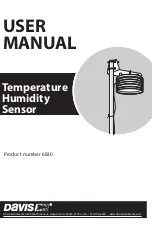
- 10 -
ServeRAID M1215 SAS/SATA Controller for IBM System x User’s Guide
Chapter 1: Overview
Integrated MegaRAID
1.2
Integrated MegaRAID
The ServeRAID M1215 controller runs in integrated MegaRAID (iMR) mode natively. iMR technology is a highly
integrated, low-cost RAID solution made possible by Fusion-MPT architecture. iMR mode is a processor-based,
hardware RAID solution designed for system environments requiring redundancy and high availability where a
full-featured RAID implementation is not required or might be cost prohibitive.
The major advantage of iMR is that it provides RAID at the processor level, so it does not burden the CPU, which allows
for more efficient operation. iMR mode is native to the ServeRAID M1215 controller and does not require a
transportable memory module.
iMR mode supports RAID levels 0, 1, 5, 10, and 50. iMR mode supports 64k stripe size only.
1.2.1
Summary of RAID Levels
RAID levels describe a system for ensuring the availability and redundancy of data stored on large disk subsystems.
Table 1
describes the RAID levels supported by the ServeRAID M1215 controller.
Table 1 Summary of RAID Levels
NOTE
Support for RAID 5 and RAID 50 requires purchase of the Feature on Demand upgrade.
NOTE
Refer to the
ServeRAID-M Software User’s Guide
for more information about RAID levels.
Raid Level
Description
Comments
0
RAID 0 uses striping to provide high data throughput
RAID 0 is well suited for large files in an environment
that does not require fault tolerance.
1
RAID 1 uses mirroring so that data written to one drive
is simultaneously written to another drive.
RAID 1 is good for small databases or other applica-
tions that require small capacity but complete data
redundancy.
5
RAID 5 uses disk striping and parity data across all
drives (distributed parity) to provide high data
throughput, especially for small random access.
RAID 5 is best suited for networks that perform a lot of
small input/output (I/O) transactions simultaneously.
NOTE
RAID 5 requires purchase of the Feature on
Demand upgrade.
10
RAID 10, a combination of RAID 0 and RAID 1, consists
of striped data across mirrored spans. A RAID 10 drive
group is a spanned drive group that creates a striped
set from a series of mirrored drives.
RAID 10 allows a maximum of eight spans. You must
use an even number of drives, and the total number of
drives must be divisible by 4 in each RAID 10 drive
group in the span. The RAID 1 virtual drives must have
the same stripe size. RAID 10 provides high data
throughput and complete data redundancy but uses a
larger number of spans.
50
RAID 50, a combination of RAID 0 and RAID 5, uses dis-
tributed parity and disk striping. A RAID 50 drive group
is a spanned drive group in which data is striped
across multiple RAID 5 drive groups.
RAID 50 works best with data that requires high reli-
ability, high request rates, high data transfers, and
medium-to-large capacity.
NOTE
RAID 50 requires purchase of the Feature on
Demand upgrade.
Содержание ServeRAID M1215 SAS
Страница 1: ... ServeRAID M1215 SAS SATA Controller for IBM System x User s Guide Part Number 00FH243 ...
Страница 4: ... 4 ServeRAID M1215 SAS SATA Controller for IBM System x User s Guide Safety ...
Страница 5: ... 5 ServeRAID M1215 SAS SATA Controller for IBM System x User s Guide Safety ...
Страница 30: ... 30 ServeRAID M1215 SAS SATA Controller for IBM System x User s Guide Appendix B Notices Appendix B Notices ...











































